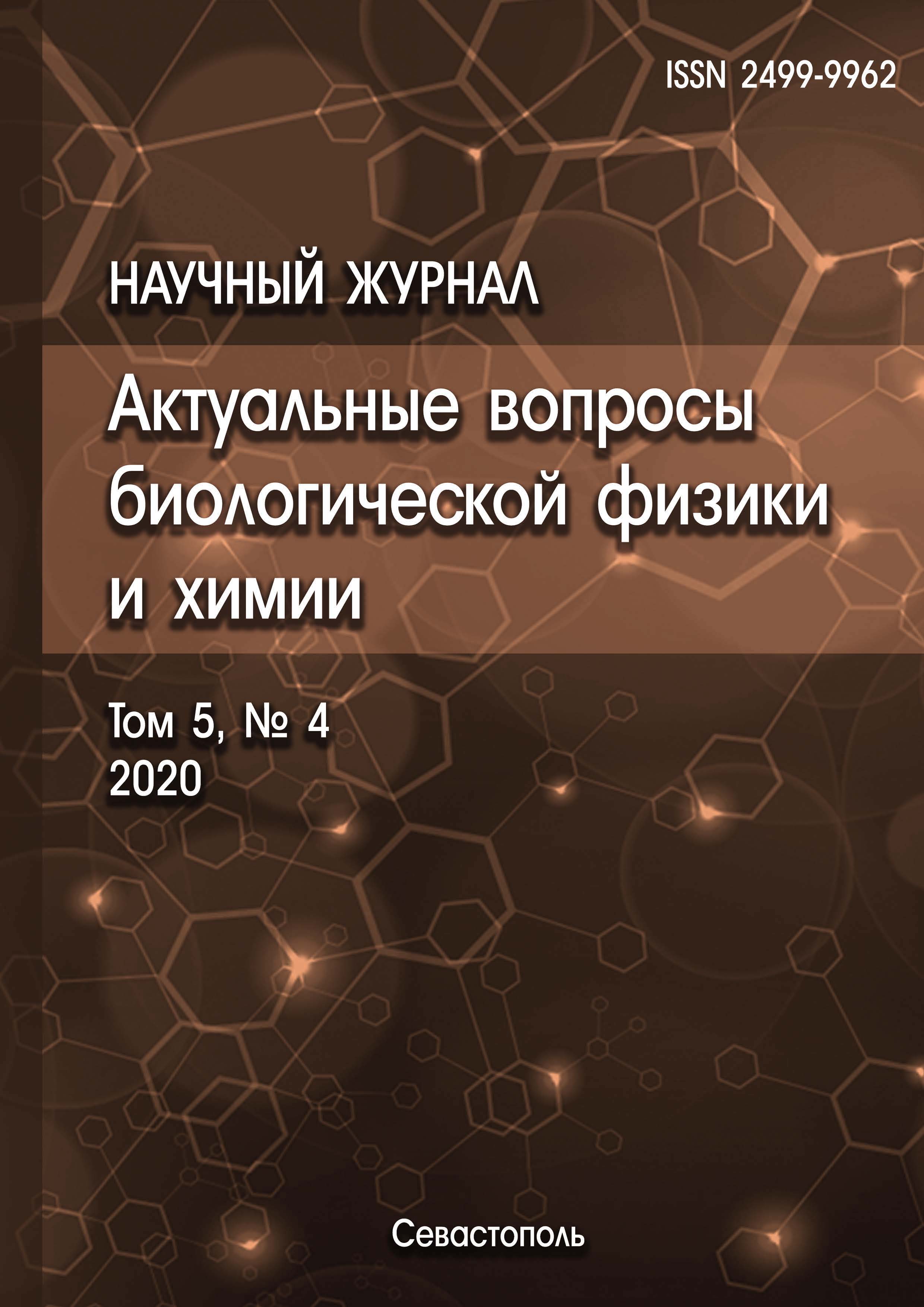The study of underwater sounds emitted by toothed whales is in demand from the point of view of ecology, underwater navigation, and military applications. Mechanisms of radiation and reception of sounds by toothed whales are the most complex problems of bioacoustics. The study, analysis, and systematization of cetacean sounds can make it possible to identify the species and number of individuals. On the other hand, toothed whales are emitters of the highest frequency sounds with complex types of modulation. If the location of the source and receiver is known, time-frequency analysis of the sound field can be used to invert the acoustic properties of the waveguide. The paper provides an overview of the species of marine mammals - toothed whales and radiated types of high-frequency sounds. The results are presented in the form of time implementations and spectrograms. It is shown that waveguide conditions of sound propagation introduce specific dispersion distortions. There can be a big difference between the sound emitted and recorded using a hydrophone. The paper shows the principal possibility of using high-frequency mammalian sounds to solve problems of inversion of acoustic properties of a waveguide.
marine mammal sounds, time-frequency analysis, multipath propagation
1. Erbe C., Dunlop R., Jenner K.C., Jenner M-N.M., McCauley R.D., et al. Review of Underwater and In-Air Sounds Emitted by Australian and Antarctic Marine Mammals. Acoustic Australia, 2017, vol. 45, pp. 179-241.
2. Romanenko E.V. Akustika del'finov i ryb. Akusticheskiy zhurnal, 2019, t. 65, № 1, s. 82-92. @@Romanenko E.V. Acoustics of Dolphins and Fish (Review). Acoustical Physics, 2019, vol. 65, no. 1, pp. 103-112. (In Russ.) DOI: https://doi.org/10.1134/S1063771019010081; EDN: https://elibrary.ru/IMSGCE
3. Rutenko A.N., Vishnyakov A.A. Vremennye posledovatel'nosti gidroakusticheskih signalov, generiruemye beluhoy pri poiske i locirovanii podvodnyh ob'ektov. Akusticheskiy zhurnal, 2006, t. 52, № 3, s. 375-384. @@Rutenko A.N., Vishnyakov A.A. Time sequences of sonar signals generated by a beluga whale when locating underwater objects. Acoustical Physics, 2006, vol. 52, no. 3, pp. 314-323. (In Russ.) DOI: https://doi.org/10.1134/S1063771006030122; EDN: https://elibrary.ru/LJOOQP
4. Dubrovskiy N.A., Urusovskiy I.A., Gladilin A.V. Model' generacii schelchkov del'fina po tipu antenny beguschey volny. Akusticheskiy zhurnal, 2009, t. 55, № 3, s. 423-430. @@Dubrovsky N.A., Urusovskii I.A. Gladilin. A.V. A model of acoustic click production in the dolphin by analogy with a traveling-wave antenna. Acoustical Physics, 2009, vol. 55, no. 3, pp. 441-447. (In Russ.) DOI: https://doi.org/10.1134/S1063771009030221; EDN: https://elibrary.ru/LLQOWP
5. Ryabov V.A. Nekotorye aspekty otrazheniya ChM-signalov (svistov) del'finov v eksperimental'nom basseyne. Akusticheskiy zhurnal, 2019, t. 65, № 6, s. 853-860. @@Ryabov V.A. Some Aspects of Reflection of Dolphin FM Signals (Whistles) in an Experimental Tank. Acoustical Physics, 2019, vol. 65, no. 6, pp. 771-777. (In Russ.) DOI: https://doi.org/10.1134/S1063771019060125; EDN: https://elibrary.ru/BJIVLZ
6. Suhoruchenko M.N. Povedencheskie issledovaniya sluhovogo razlicheniya del'finom par impul'sov-schelchkov s odinakovym mezhimpul'snym intervalom. Akusticheskiy zhurnal, 2008, t. 54, № 6, s. 1003-1008. @@Sukhoruchenko M.N. Behavioral studies of the auditory discrimination of paired pulses with identical pulse spacings by a dolphin. Acoustical Physics, 2008, vol. 54, no. 6, pp. 874-879. (In Russ.) DOI: https://doi.org/10.1134/S1063771008060183; EDN: https://elibrary.ru/LLKEFD
7. Ivanov M.P. Eholokacionnye signaly del'fina pri obnaruzhenii ob'ektov v slozhnyh akusticheskih usloviyah. Akusticheskiy zhurnal, 2004, t. 50, № 4, s. 550-561. @@Ivanov M.P. Dolphin’s echolocation signals in a complicated acoustic environment. Acoustical Physics, 2004, vol. 50, no. 4, pp. 469-479. (In Russ.) DOI: https://doi.org/10.1134/1.1776226; EDN: https://elibrary.ru/LITFUL
8. https://cmst.curtin.edu.au/research/marine-mammal-bioacoustics (date of assess 28.07.2020)
9. Lisyutin V.A., Lastovenko O.R., Yaroshenko A.A. Sravnitel'naya ocenka vklada luchevyh i volnovyh komponent pri rasprostranenii impul'snyh signalov v podvodnom zvukovom kanale Chernogo morya. Ekologicheskiy vestnik nauchnyh centrov Chernomorskogo ekonomicheskogo sotrudnichestva, 2018, t. 15, № 2, s. 74-85. @@Lisiutin V.A., Lastovenko O.R., Yaroshenko A.A. The Comparative Evaluation of the Ray and Wave Components Contribution to the Impulse Signals Propagation of the Black Sea Underwater Sound Channel. Ecological Bulletin of Research Centers of the Black Sea Economic Cooperation, 2018, vol. 15, no. 2, pp. 74-85. DOI:https://doi.org/10.31429/vestnik-15-2-74-85 (In Russ.) EDN: https://elibrary.ru/XRAFWX
10. Lisyutin V.A. Prostaya akusticheskaya model' nekonsolidirovannyh morskih osadkov s vnutrennim i vyazkim treniem. Ekologicheskiy vestnik nauchnyh centrov ChES, 2018, t. 15, № 3, s. 39-51. DOI:https://doi.org/10.31429/vestnik-15-3-39-51. @@Lisyutin V.A. A Simple Acoustic Model of Unconsolidated Marine Sediments with Internal Friction and Viscous Dissipation. Ecological Bulletin of Research Centers of the Black Sea Economic Cooperation, [e-journal] 2018, vol. 15, no. 3, pp. 39-51. DOI:https://doi.org/10.31429/vestnik-15-3-39-51. (In Russ.) EDN: https://elibrary.ru/YABSXR
11. Lisyutin V.A. Obobschennaya reologicheskaya model' nekonsolidirovannyh morskih osadkov s vnutrennim treniem i effektivnoy szhimaemost'yu. Morskoy gidrofizicheskiy zhurnal, 2019, t. 35, № 1, s. 85-100. DOI:https://doi.org/10.22449/0233-7584-2019-1-85-100. @@Lisyutin V.A. Generalized Rheological Model of the Unconsolidated Marine Sediments with Internal Friction and Effective Compressibility. Physical Oceanography [e-journal], 2019, vol. 26, no. 1, pp. 77-91. DOI:https://doi.org/10.22449/1573-160X-2019-1-77-91. (In Russ.) EDN: https://elibrary.ru/YZBBOH
12. Lisyutin V.A., Lastovenko O.R. Ocenka vliyaniya vnutrennego i vyazkogo treniya na dispersiyu i zatuhanie zvuka v nekonsolidirovannyh morskih osadkah. Akusticheskiy zhurnal, 2020, t. 66, № 4, s. 420-436. DOI:https://doi.org/10.31857/S0320791920040061. @@Lisyutin V.A., Lastovenko O.R. Assessing The Influence of Internal and Viscous Friction on Dispersion and Sound Attenuation in Unconsolidated Marine Sediments. Acoustical Physics, 2020, vol. 66, no. 4, pp. 401-415. DOI:https://doi.org/10.1134/S1063771020040065. (In Russ.) EDN: https://elibrary.ru/HQOVVP










